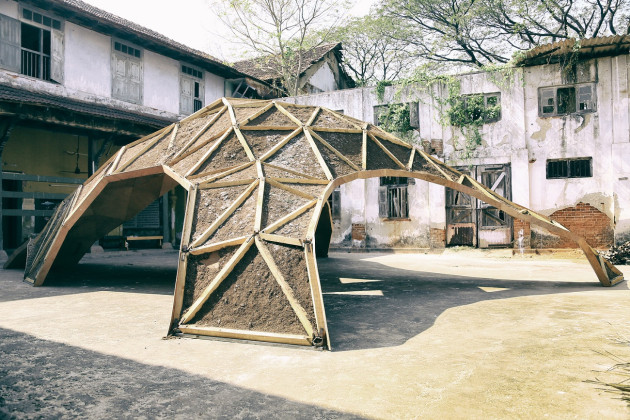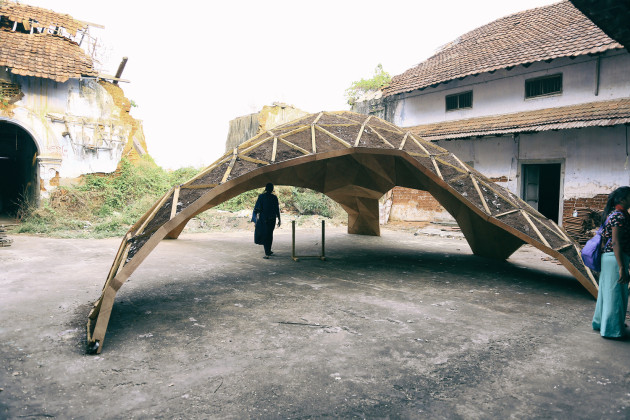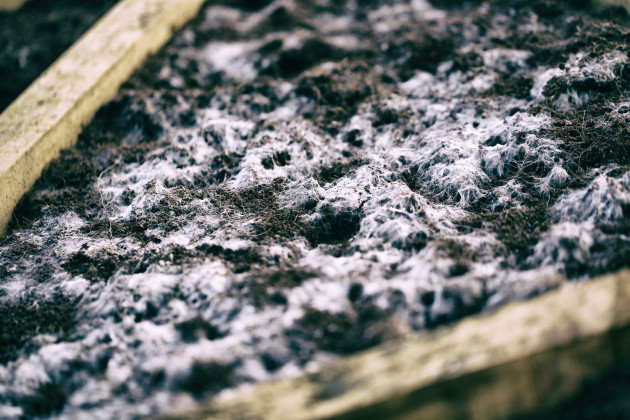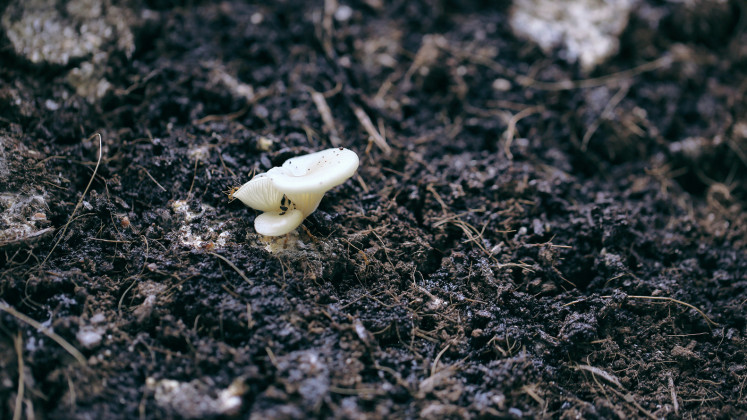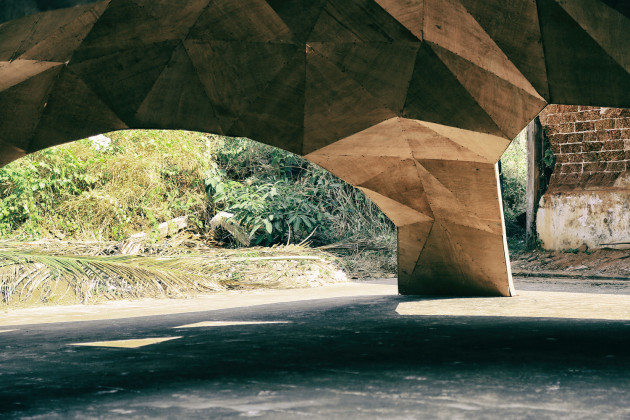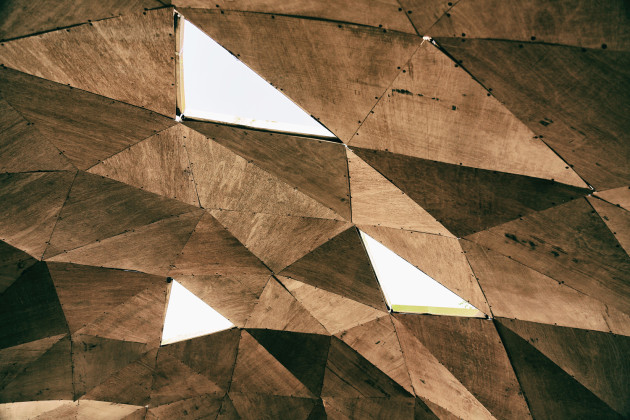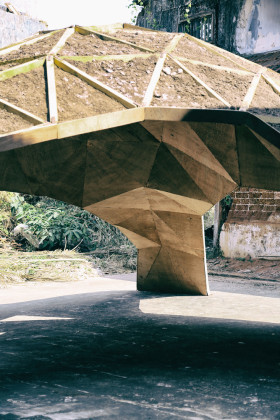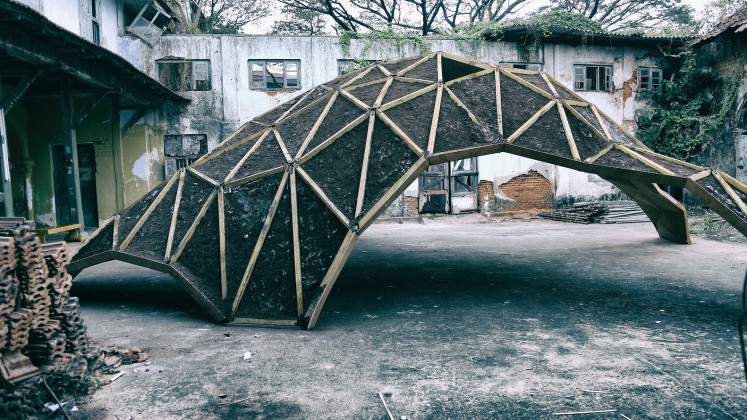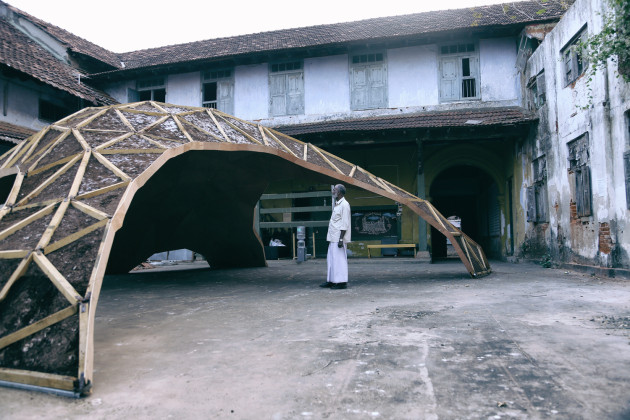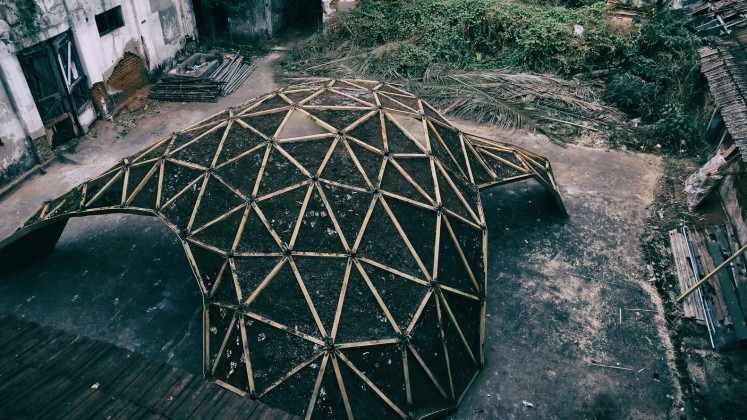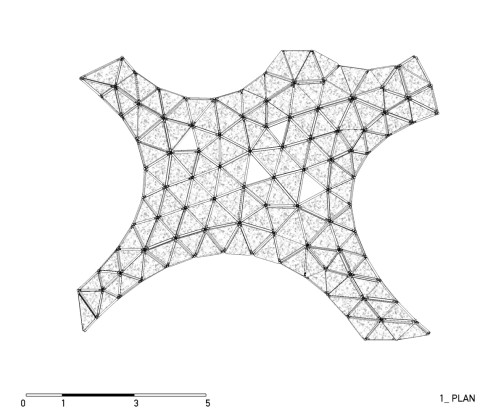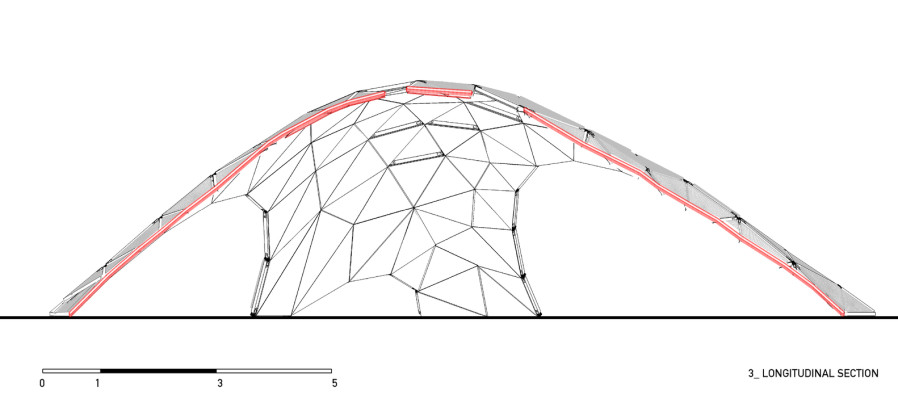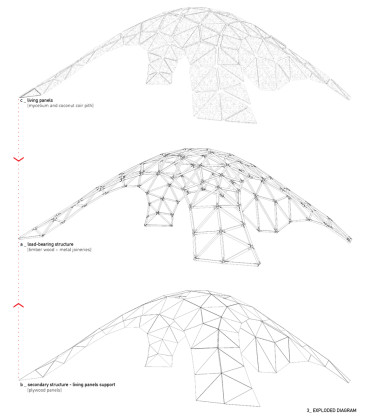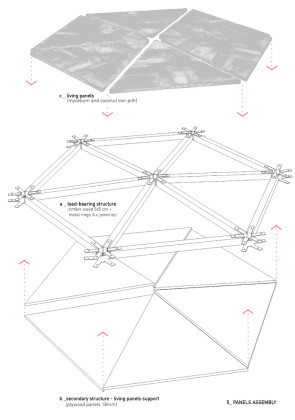A Temporary Manifesto for Unconscious Choices
Developed with a new approach to sustainability, the pavilion uses mycelium to promote it as an alternative construction material, stressesing the need for temporariness.
In an era of concrete jungles and overcrowded cities, degradability, sustainability, and liability become parts of the responsibility of architecture. It is an innovation in the field of biology and architecture, a concept that stresses the need for temporariness. A way of mimicking nature to forge our path onward, where existence questions permanence. Mycelium is the vegetative part of a fungus like mushrooms and it is being touted for the first time in India.
Architecture is a permanent sign in any territory. During major events like the Olympic games, expos, FIFA world cups, multiple structures are constructed. In most of the cases, the structures constructed are permanent, making use of heavy construction material. This approach leads to many practical difficulties in demolition and disposal. Many of the structures are erected as a sign of the prosperity and strength of a nation’s economy and the cities unconsciously pay the price. At the end of the event, after the entire world has danced and celebrated, the city remains a scarred body, devoid of life. The city is ravaged and the ghost town that is left behind takes decades to metabolize. We criticize these unconscious political choices, with living buildings that arise from nature and return to nature, as though they never existed.
The installation is site specific which means that not just the display area was considered, but local labor and materials as well. They started off with research at a local mushroom farm. Experiments led to the selection of the right mushroom and study of growth patterns. The wooden structure for the Shell Mycelium installation was designed to sit within the degrading Dutch Warehouse. A reflection of sorts. The openness was an invitation to explore and the structure was designed to disintegrate according to their design. The structure was then covered in coir pith which contained the fungus. After a few days of tending, the mycelium grew and formed a snowy covering over the structure. The top layer died due to sunlight and formed a shell that protects the bottom layers. As the Biennale came to a close, the structure had slowly started to disintegrate, while curious visitors experience it.
 18.09.2017
18.09.2017



